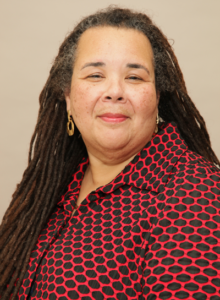critically reflective teaching
Select an item by clicking its checkbox
It was my first semester teaching. I was anxious and fearful. I was trying to know what to do, while pretending I knew everything. In my second or third class, as I was saying something critical of the US in relationship to 9/11, one student raised his hand and said: “What ...
Five years ago, Yale law professor Amy Chua published a controversial book, Battle Hymn of the Tiger Mother. According to Chua, there is a basic difference in parenting practices between those of Asian (particularly Chinese) cultural heritage and those of North American white cultures. The former, by assuming strength and ...
My father, Lloyd R. Westfield, spent the majority of his career as a school psychologist with the Philadelphia public school system. He loved his job, and by many accounts, he was very good at his job. I have vivid memories of him, one summer, as an adjunct professor for Temple ...
I am delighted to be writing this blog with two other fantastic teachers I admire greatly: Lynne Westfield and Tat-siong Benny Liew. The Wabash Center has been a fantastic place that has empowered so many teachers, and has expanded resources and possibilities for learning and networking, and I am grateful ...

Discontinuity in Learning: Dewey, Herbart and Education as Transformation
Date Reviewed: December 16, 2015
Andrea R. English’s Discontinuity in Learning re-links the work of Johann Friedrich Herbart with that of John Dewey. Dewey criticized Herbart’s work, causing, English argues, future critics to separate Dewey’s thought from its European predecessors (xx). English argues for continuity, that both thinkers want to identify and develop ways “for learners to recognize and respond to the other in judgments and actions” (104), through the experience of discontinuity.
English’s excellent analysis of Herbart focuses on discontinuity, offering frameworks to analyze educational theories and practices that ignore discontinuity and reconnecting Anglo-American and Continental philosophies of education (xxiii-xxiv). I cannot do justice to this rich book here. I will focus on its main idea: education as discontinuity.
English examines Herbart’s analysis of the educational possibilities in his contemporary’s (Kant’s) Categorical Imperative. To act so as not to treat others as things and as any other ethical person would act, one engages in moral choice. Herbart argues that educators can work with the experience of the discontinuous that emerges in encounter with the “other,” identifying where a learner already acts out of inner freedom (46) to move that learner to greater freedom, the capacity beyond “self-interested desires,” in recognition of and respect for the other (7).
Discontinuity causes a pause (34) at the limits of one’s abilities and/or knowledge (xxii). This “in-between” (Dewey), “distance” (Herbart 16, 27), or “break” (English, 17) is a site of struggle (59) to transcend a limit. There, the learner can “identify and potentially change” her relation to the other (65). A teacher does not choose for the student, but designs an intellectual experience, to use Donald Finkel’s term, to scaffold the struggle (17), while, simultaneously, being open to improvisation on the design.
Dewey agrees with Herbart: discontinuity is to “undergo or suffer the world” that upsets stable understandings (66), a starting-point for reflection (68). In learning, teacher and student struggle together in ongoing “critical self-relation.” For Dewey, the classroom is not just a site of moral struggle but of democratic action (89). Arriving at the social, as well as personal, “limits of thought and ability” (102), one learns, potentially, to choose for the good of all. Both the classroom and democratic society should support the deep learning that ensures freedom.
For Dewey and Herbart, the goal of learning is right orientation to the other (105) through disorientation and reorientation, guided by the teacher who listens intently and generates dialogue, moving students to greater inner freedom and just action. The skilled teacher deploys “pedagogical tact” (50ff, 126ff.), discerning when to intervene in student learning and when to improvise (129) on the learning design. Neither teaching nor learning, therefore, can be determined as complete in outcomes and measured fully by evaluations. Nowadays we experience such “urgency” (55) about measures that we want to “predetermine” and “guarantee” learning (156). English argues, instead, for cherishing the discontinuous and valuing the improvisational space of the classroom in which teachers “acquaint the next generation” with their present world and prepare them for a “future yet to be discovered” (160).


